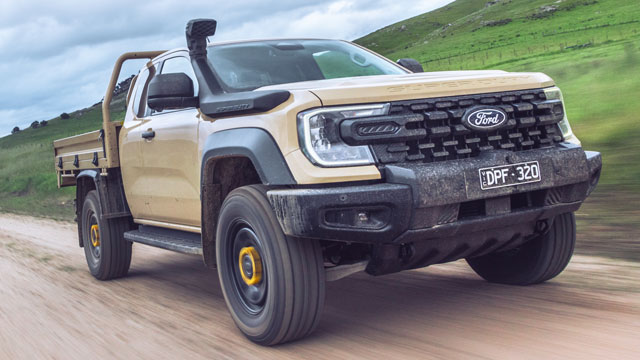2026 Nissan Navara first impressions

If you’ve found yourself noticing strong similarities between modern Nissan and Mitsubishi models, don’t rush off to the optometrist just yet. Nissan and Renault created a development and platform-sharing alliance in 1999, and Mitsubishi joined to make it a trio of brands in 2016.
After a decade-plus generational run, the all-new fifth-generation Nissan Navara will arrive in Australia in the first quarter of 2026. It leans heavily on its alliance with Mitsubishi and uses the same underpinnings that the Mitsubishi Triton has ridden on for two years.
So has the wait been worth it? And has Nissan done enough to differentiate the Navara from its Mitsubishi counterpart? We were among the first in the world to drive it at a South Australian proving ground and set out to answer just that.
How much does the 2026 Nissan Navara cost?
Pricing remain unconfirmed at this stage, with a model launch slated for the first quarter of 2026.
What we do know, however, is a range of four variants will be available at launch, kicking off with SL base trim, ST, uprated ST-X, and Pro-4X.
A toughened flagship Warrior grade will follow on, receiving further off-road tuning, additional underbody bash plates, and Warrior-specific styling.
A big change that is confirmed is news the 2026 Nissan Navara will be sold in only one configuration: a dual-cab body with an automatic transmission and four-wheel drive. Nissan Australia tells us this is in response to market demand of the current-gen Navara – more than 90 per cent of Australian buyers opt for this layout.
It means the next-gen Navara will have a massively simplified line-up, with the number of variants dropping from 17 to just four.
Knowing this bodystyle and powertrain configuration helps get a yardstick for potential pricing.
In the Navara’s current generation, a base SL dual-cab with auto and 4x4 kicks off from $44,900 drive-away (in Sydney) depending on promotional pricing, while an entry-level 4x4 dual-cab Mitsubishi Triton can be had for $50,490 before on-roads.
What does this mean? We could see a cost of entry for the new Navara of more than $50k.
As with all new Nissan models, the 2026 Navara is eligible for a 10-year/300,000km warranty when serviced within its dealer network.
What is the 2026 Nissan Navara like inside?
There really isn’t much by way of aesthetic diversion between the new Navara and the Triton.
Limited in their design scope, due to the Navara retaining all of the Triton’s metal body panels, Nissan designers have had to get creative.
Front and rear bumper and tail light design is updated, with the Navara attempting to pay some homage to its traditional V-shape front grille and three-slit design cues dating back to the D21 generation. Alloy wheels across grades are specific to the Navara and look great in the metal.
The bed is now 46mm longer and 1mm wider between the wheelarches, however, loses 15mm of width elsewhere. Despite this, it can still fit a Euro pallet.
Moving inside, the Navara makes even less of an effort to hide its Triton origins. All of its switchgear and componentry – even most surfaces – are shared directly with its Mitsubishi twin. Distinction is a little more pronounced in the Pro-4X and Warrior grades, with bespoke branding and colour accents throughout.
Sharing cabin DNA with the Triton is not a bad thing, though, and the new Navara adopts its strong ergonomic fundamentals, including a good balance between physical control equipment and on-screen adjustments.
A 9.0-inch centre touchscreen runs wireless Apple CarPlay but still requires a cable connection for Android Auto. The infotainment software is shared among Nissan’s alliance partners and has been in operation in other models for some time now. While that brings a certain degree of familiarity, the software and menu structure is feeling its age and seems outdated in what is billed as a new-generation Navara.
The driver display measures 7.0-inches and is a stronger proposition in terms of interface and information than the infotainment.
Over the previous Navara, seats are wider up front and in the rear. Legroom for rear-seated passengers is also up 42mm.
— Liam Murphy
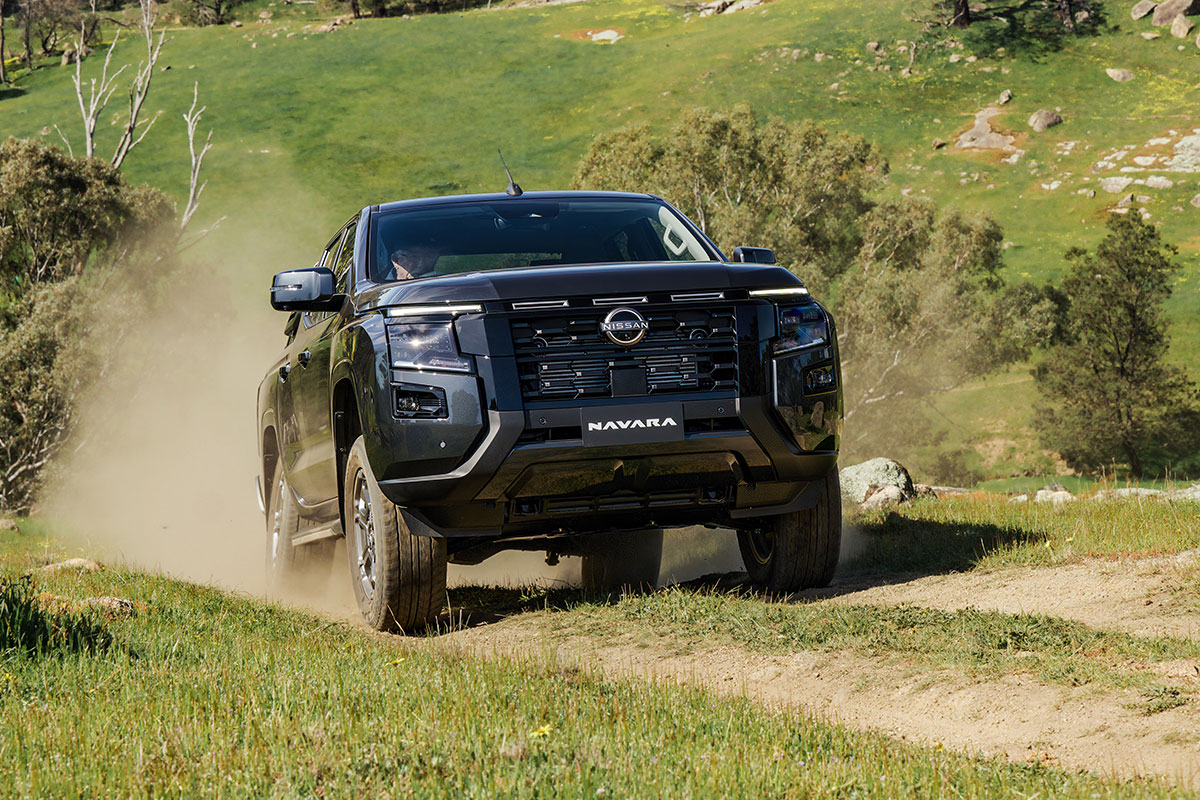
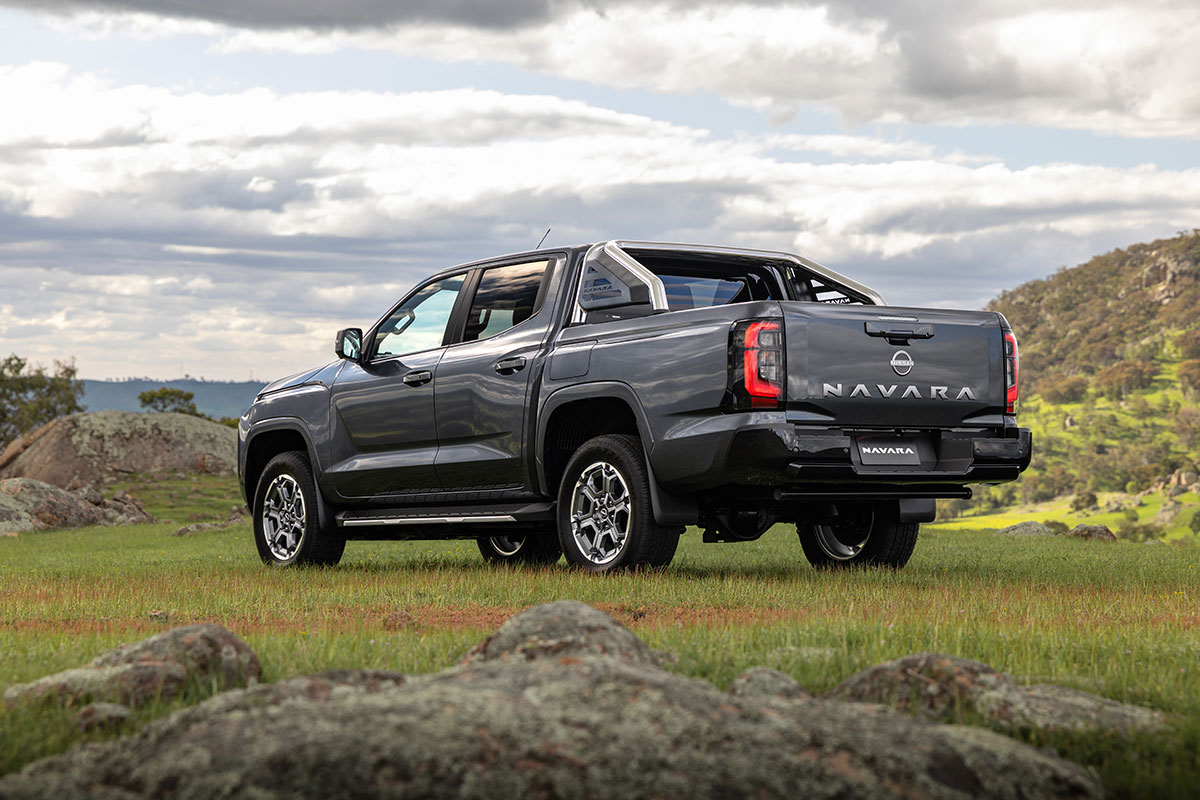
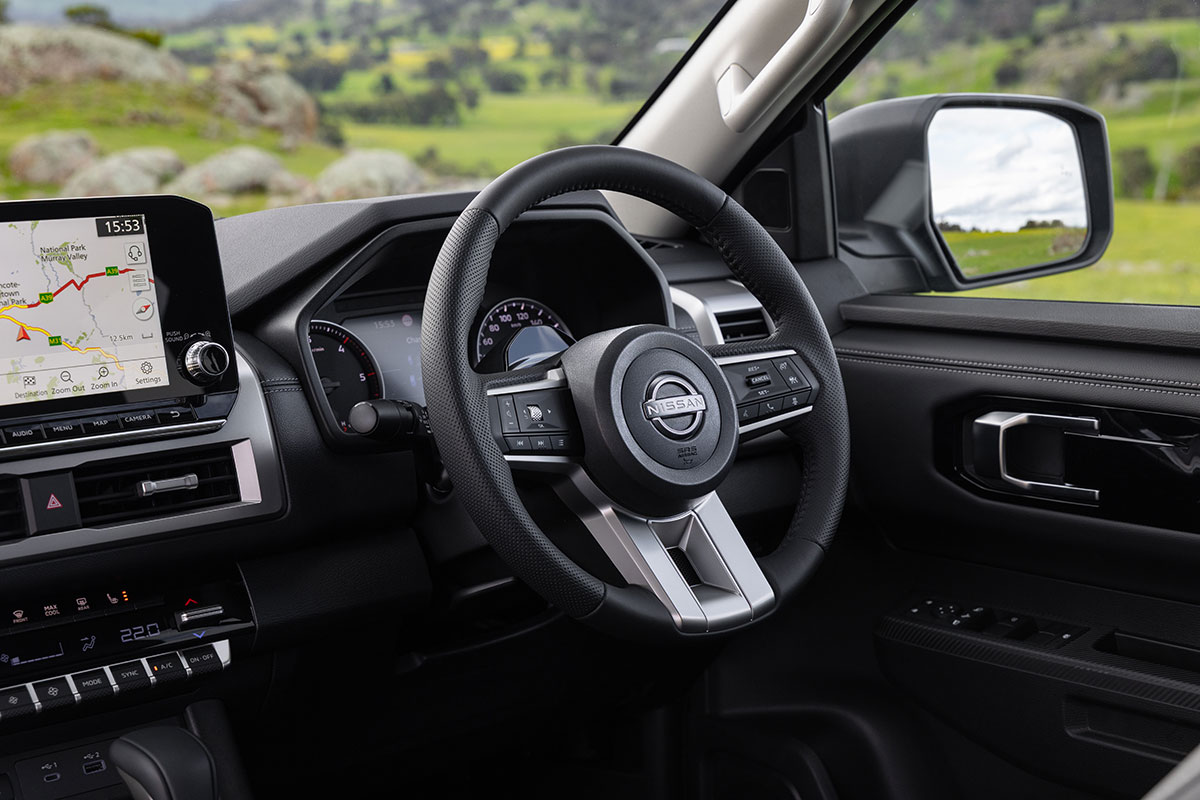

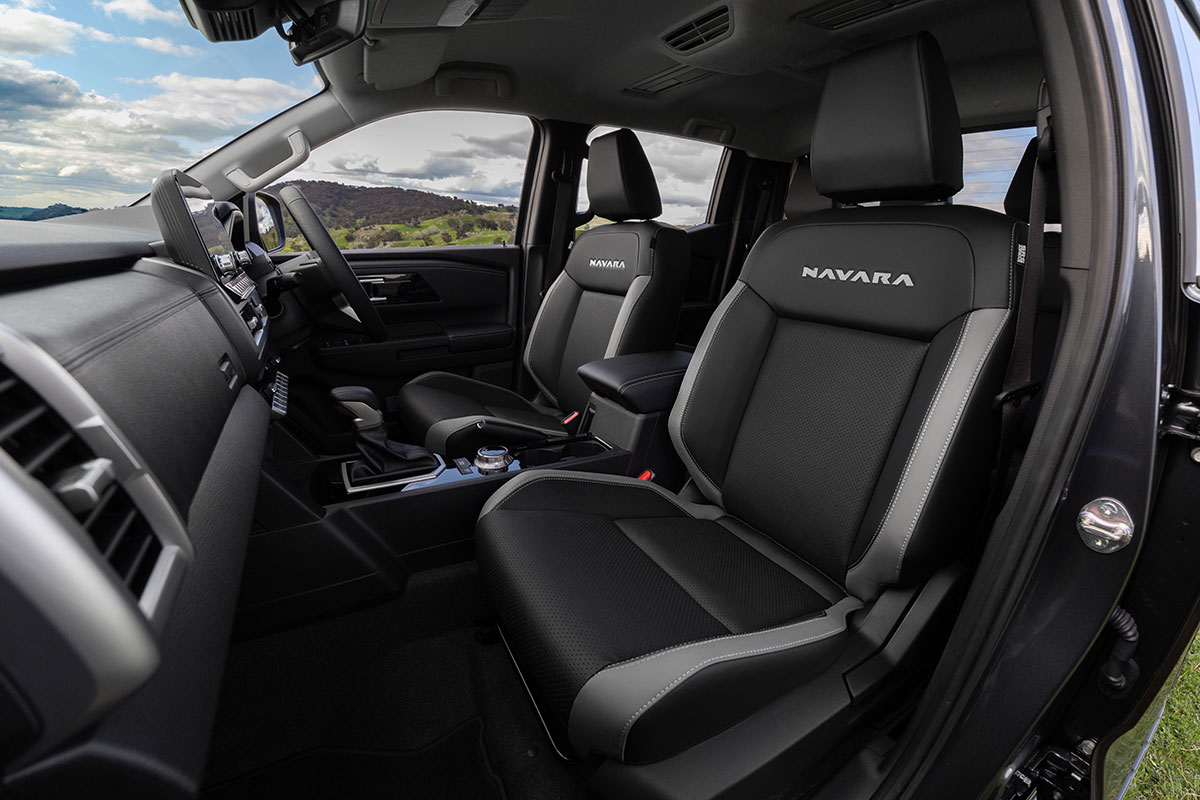

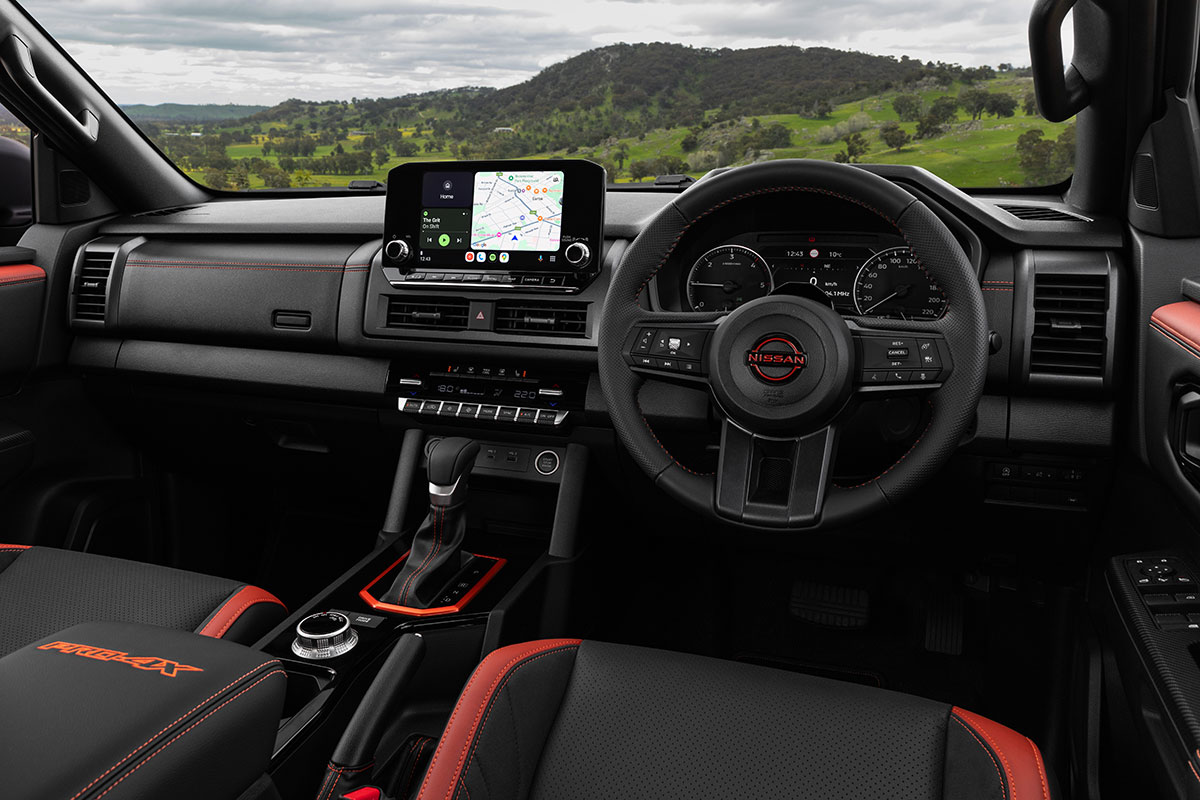
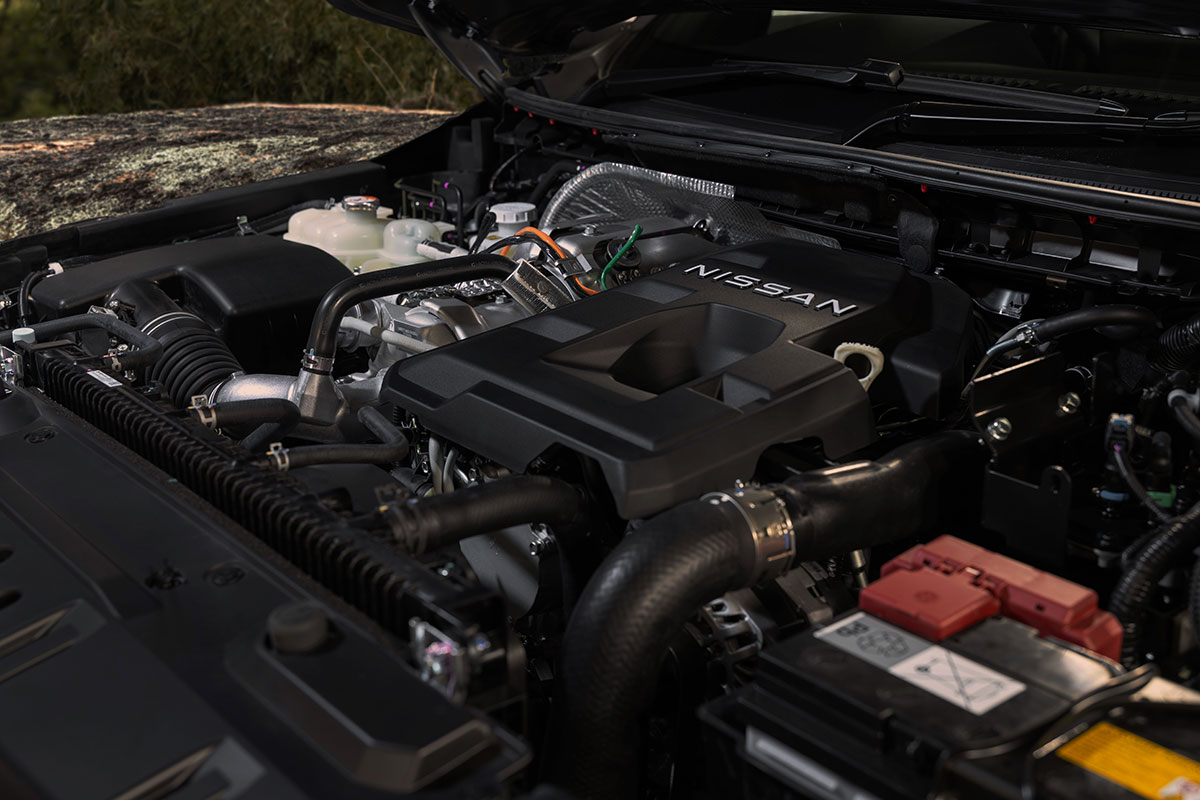
What equipment does the 2026 Nissan Navara come with?
Local specification is far from confirmed, but the model will receive those 9.0- and 7.0-inch infotainment and driver display screens, and run Nissan’s connected car services – the first time it’s been applied to the Navara nameplate. It allows remote AC control, car finder, and remote lock and unlock from a phone app.
Wireless Apple CarPlay and wired Android Auto come as standard. Wireless phone charging comes fitted on ST-X grade and up, with LED head and tail lights are standard.
A 360-degree camera joins the standard equipment list, with much improved definition and image ‘stitching’ than its predecessor.
It’s believed the base trim will come with an open rear differential from the factory, with higher grades scoring an electronically lockable unit. All variants come with a locking centre differential and a terrain selector with seven modes (normal, eco, gravel, mud, snow, sand, rock).
Lower SL and ST variants are fitted with the brand’s Easy 4WD four-wheel-drive system, with ST-X and Pro-4X moving to a superior Super 4WD system, able to run 4x4 on sealed surfaces.
How safe is the 2026 Nissan Navara?
The 2026 Nissan Navara adopts the same five-star ANCAP score as the Mitsubishi Triton.
A comprehensive safety suite comes as standard, including emergency lane assist, traffic sign recognition, lane departure warning and assist, blind spot warning and lane change assist, front and rear cross-traffic alerts, a driver monitoring system, and adaptive cruise control.
What powers the 2026 Nissan Navara?
A (new-for-the-Navara) 2.4-litre bi-turbo diesel four-cylinder powers the next-gen Navara. It’s the same engine found in the Mitsubishi Triton.
Outputs of 150kW and 470Nm represent jumps of 10kW and 20Nm over the outgoing model, with a 0.2L/100km reduction in consumption also achieved, now 7.7L/100km. A move to Euro 6 emissions for the new powerplant does necessitate the use of AdBlue.
A 3500kg braked towing rating is retained for the Navara, however payload is down slightly (950-1047kg versus 1004-1117kg). Drive gears have been reduced from seven to six, and, as mentioned above, are only available in an automatic transmission.
What is the 2026 Nissan Navara like to drive?
If there is one area where the new Navara may deviate from the Triton most, it’s ride and handling.
For the new Navara, Nissan head office requested the services of Melbourne-based engineering firm Premcar – which has, for yonks, taken care of beefing up Navaras and Patrols for Nissan’s tough ‘Warrior’ variants.
The result here was 137 damper codes and more than 550 internal damper shim combinations assessed over 18,500km of Australian validation testing by the local tuner. Leaf springs (and all other mechanical componentry) remain identical to the Triton, however the steering tune has also been revised for a more progressive feel.
Our time with the 2026 Nissan Navara was limited in time and scope – about half an hour on an off-road proving ground just outside of Adelaide – but the efforts taken by Premcar seem to have paid dividends.
The 2026 Nissan Navara swallows up imperfections with poise, retaining good connectedness on unsealed roads without a jarring ride. We would have loved to see how these tweaks have changed the ride at higher speeds on sealed roads, but that verdict will have to wait.
The Open Road’s take on the 2026 Nissan Navara
It’s hard to form a cohesive opinion on the 2026 Nissan Navara when so much remains under wraps and untested.
Nissan – both its designers and engineers – have clearly been handed a tall ask in trying to turn an alliance platform into something uniquely Nissan, and the degree to which they’ve succeeded varies considerably.
With more standard equipment than its Triton twin, and what seems ostensibly to be a superior ride, it should at least be viewed as the superior vehicle of the two. Whether it moves the needle enough to make a more pronounced impact on the segment-leading Ford Ranger and Toyota HiLux remains to be seen, though.
Pros:
- Simplified range for buyers
- Warrior variant to return
- Comprehensive local ride tuning
Cons:
- Doesn’t deviate from its Triton twin enough
- Questionable exterior styling
- Much higher cost of entry






